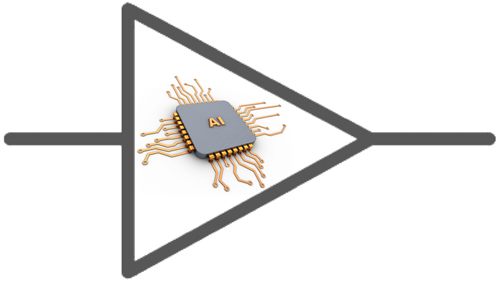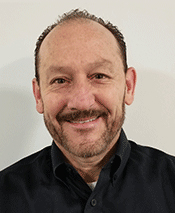Intelligent Amplifiers for 1.8 GHz HFC Extended Spectrum — A Smart Idea
By Nick Segura
Artificial intelligence in our industry is imminent, so why can’t we begin building this structure into contemporary amplifiers and coin the term “amplifier-intelligence” (AI)? I would be remiss not to first recognize those who were involved in the development of the HMS standard, and those who have implemented amplifier upstream ingress detection and transponders for power supply monitoring. We hope to take this journey further by leveraging the incredible industry talent around the globe to create a modern 1.8 GHz amplifier in support of DOCSIS 4.0. If planned right, our PNM tools will become even more powerful, and operational efficiencies can be increased by removal of human error. In fact, this can easily turn into a technological draw that attracts engineers of all ages into our growing telecommunications business.

Today/tomorrow — why now?
In systems today operators use tools to gain visibility into traditional amplifier performance. For example, forward and return sweep show amplitude versus frequency response to help align RF levels and maintain linear operation in support of finding the critical balance between CNR and distortions contribution. Also, many operators are fortunate to own complex signal level meters, TDRs, and leakage detectors to maintain their plant through regular preventive and demand maintenance efforts. By merging CMTS service groups with the billing system we can gain proximity and amplifier health without having to rely on system maps; however, there are so many more operational advantages that can be realized if we increase telemetry to and from system amplifiers — please read on!
Integrating intelligence into amplifiers may come with added costs, and the finance folks could meet that with some resistance stating, “why now? — we have always operated successfully without.” Seasoned system technicians may even lean back and exclaim with attitude, “I’d rather not make them more complicated, unless you can have them fix plant issues for me.” Hmm, not a bad idea! Perhaps AGC circuits can incorporate full band capture from an internal cable modem that monitors the RF spectrum and somehow supports spectrum-specific corrective properties during extreme plant variability. What if a freshly balanced set of amplifiers can reference stored baseline RF inputs and outputs, so that if/when hardline cables and connectors are compromised the networked amplifiers can compensate with higher or lower gain (provided reserves are available) and continue to produce optimized CNR with the lowest distortions? This would support the highest RxMER possible and consequently the highest OFDM/OFDMA modulation orders. Of course, any temporary relief automation must be augmented with a timer function tied into a workforce management intervention tracking feature so it is not forgotten.
This research and development effort is BIG, and before 1.8 GHz high/ultra-high split amplifiers are produced in bulk, there is so much potential to improve fault identification methods and the ability to maintain and improve overall node health. The goal would be to create such an operational savings that it pays for itself.
“Man is a slow, sloppy and a brilliant thinker; the amplifier is fast, accurate and stupid.”
— William M. Kelly
What are the possibilities, and what are the associated costs?
Monitoring and control
Fundamental features of an upgraded intelligent amplifier could directly impact key performance indicators like service delivery and product reliability through enhancements such as:
- Reduced risk of interference by automatically identifying when an amplifier enclosure is opened, and for how long. Output RxMER can be measured for the presence of over-the-air UHF ingress interference in LTE 4G and 5G bands, and then a warning given to the technician.
- Self-aligning capabilities through software to automatically set up initial pad and equalizer values to match design. Upon network connectivity an amplifier can phone home, and when approved by the technician, configurations can be set and select performance parameters could be recorded without manual entry efforts.
- Prevention/mean time to repair (MTTR) — During troubleshooting efforts it would be nice to rule out electrical amplifier issues because the amplifier itself reports ideal voltage and gain properties. By knowing this a technician can be directed to another potential issue rather than replacing the module as a first choice and possibly causing another problem unnecessarily. Also, with recorded inputs and outputs there could be a way to determine cable span loss so that cable/connector issues, module failures, and design misses can be identified. Tying all of this additional information into a data science team’s database could lead to identifying unstable network performance and lead to fewer repeat trouble calls.
- Knowledge will certainly increase for field technicians and operations center agents to make better decisions like shifting demand maintenance to preventive maintenance over time with more accurate and precise efforts. Performance scorecards could increase where everyone wins!
Workforce management
Gleaning accurate amplifier locations via GPS coordinates from an amplifier could support quicker response efforts, and if fed into a design database, the location could help validate cascades based on RxMER performance. Comparing expected versus measured RxMER along with design criteria can identify alignment fidelity misses.
Alarm thresholds can be established for additional relevant parameters and priority can be decided for directing the workforce to perform preventive maintenance activities prior to customers calling. This could increase the effectiveness of the operating centers.
Equipment inventory and sparing
Through connectivity to each amplifier a database collection process can be simplified requiring fewer manual entries, and with the development of simple algorithms, amplifier assets and more valuable parameters can be tracked to include make, model, pad and equalizer settings, operational gain, firmware, and to determine end-of-life based on a reliability factor that aids in budgeting decisions and timing.

Betterment of tools and troubleshooting
Expert ingenuity will be required to figure out how to affordably detect the severity of upstream ingress per amplifier leg. With a high-split architecture ingress detection is more important than ever due to the FM band, so operators can maintain the use of all available throughput. Perhaps a full band spectrum capture can be derived from an internal cable modem and used to identify amplifier non-linarites, and by incorporating a historical analysis operators can understand how AGCs are performing in extreme hot/cold conditions and during large temperature fluctuations. It may be possible to record early indications of an amplifier failing related to bias current, voltage, or other. Also, with a strong database correlation between amplifiers and cable modems, operators can better determine if pocket outages are related to cable cuts or power outages even without leveraging plant maps. What if intelligent amplifiers can provide power consumption and voltage and current stability from the sourced power supply, would that be of value? Perhaps power boundary, and even power grid analysis, may be realized which are very valuable to both the cable operator and to the electric service provider because it shows frequency and other stability information passed through the area standby power supply. This is a critical measure of a power grid’s performance and may potentially be a source of revenue.
New challenges
Additional RF tap-off test points inside of the new amplifier are required to support the modem transponder and other monitoring and control features. This is challenging because the losses add up, even with a DC-16, and achieving necessary total composite power (TCP) puts a strain on the ability to carry higher frequencies while maintain existing spacing.
In planning for future upstream/downstream split changes, operators seek remote controllable switchable diplex filters similar to the ones in cable modems being purchased today. The goal is to avoid amplifier replacements and module swaps when moving to a high-split, or ultra-high-split, architecture as upstream congestion and market competition necessitates expanding the return path.

Risks
When diving into such investment strategies we must not reduce knowledge requirements for technicians. There has to be more investment in monitoring and control tools to bring visibility should a smarty-pants amplifier get hacked or becomes a runaway risk due to software. Safeguards for AGC operation are already being planned; however, there may be some AI developed that mimics behavior of a different amp in a distant location.
Amplifier loading at high frequencies is a fine balance, and if the total composite power is interpreted incorrectly due to anomalies from unintended ingress, distortions or self-inflicted degraded frequency response can be detrimental. Any method designed to prevent an issue must not come back to bite us later. Fortunately, we’re able to watch and learn from current DAA deployments where the right amount of device intelligence may lie.
Conclusions
Incorporating intelligence into a system amplifier is a smart move if we can determine the best bang for the buck. With so many possibilities how do we know which items operators will invest time in to reap the rewards? Like with other industry products, if operators can align on a similar product then commodity pricing becomes a reality. With IT staff in place to augment tools, and because data science efforts are so prevalent, the concept of keeping it simple may not make sense.
Currently there is an SCTE IPS working group working on 1.8 GHz actives standards. Most of the ideas in this article were born out of volunteers from Cox, Shaw, Charter and CableLabs — thank you! In fact, there are over one hundred industry experts from dozens of MSOs, vendors and manufacturers, CableLabs, and SCTE who are deliberating on configuration, control, and monitoring for amplifiers — both local and remote. Rest assured this group has the front line operations teams’ best interest in mind because they own the relationship with customers.
 Nick Segura,
Nick Segura,
Principal Engineer,
Charter Communications
Nick Segura is a Principal Engineer in the Infrastructure Architecture & Engineering OSP group in Englewood, Colorado. He joined Charter in 2003 to assemble their Technical Quality Assurance Program, has served as Director of Technical Operations and is now responsible for developing new technology solutions in the RF realm that are reliable, simple and cost effective for the outside plant. Nick has been active within the SCTE for over 29 years and currently serves on the Society’s Rocky Mountain Chapter board of directors.
Shutterstock



